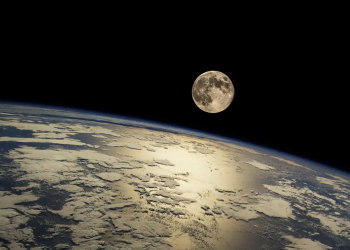In a groundbreaking study published in the Proceedings of the National Academy of Sciences, a collaborative effort between climate experts, health professionals, and atmospheric scientists from Spain and Japan has revealed the presence of live fungi, bacteria, and viruses in the upper echelons of Earth’s atmosphere. The research, conducted at altitudes ranging from 1,000 to 3,000 meters, sheds new light on the resilience and distribution of microbial life.
The team embarked on a high-altitude expedition over Japan, employing a chartered plane to collect air samples near the planetary boundary layer. This region, critical to climate dynamics, served as a natural laboratory for their investigations. Complementing their aerial collection, the researchers also gathered detailed weather data to better understand the conditions encountered by these microbes during their atmospheric journey.
Historical data has long established that dust particles can traverse continents, with African dust clouds reaching as far as North and South America. This study builds on such findings by demonstrating that microbes, hitching rides on these dust particles, are capable of similar long-distance travel.
Microbial High Flyers
In a meticulously controlled laboratory setting, the research team conducted DNA analyses to catalog the varieties of life found in the samples. Their findings were astonishing: 266 different types of fungi and 305 varieties of bacteria, many of which are known to pose risks to human health. What’s more, many of these microbes were not merely present—they were alive and thriving, as evidenced by successful culture growths in laboratory dishes.
These microorganisms, predominantly linked to soil or plant origins, are believed to have traveled over 2,000 kilometers from China, propelled by high-altitude wind currents. This suggests a fascinating, if somewhat concerning, vector for the potential global spread of bio-pathogens.
A New Frontier in Science
The discovery of viable, diverse microbial communities at such high altitudes has profound implications for both public health and climate science. It suggests a novel mechanism for the spread of diseases across geographical boundaries, challenging existing paradigms of biosecurity and epidemiology.
This research not only maps a previously underexplored distribution of microbial life but also opens the door to new questions about the interaction between Earth’s biosphere and its atmosphere. How do these high-flying microbes affect cloud formation and weather patterns? Could they impact climate systems on a global scale?
As the planet faces increasing challenges from climate change and global health threats, understanding these atmospheric travelers becomes crucial. Future missions and studies, similar to the NASA Aeronomy of Ice in the Mesosphere (AIM) mission, could further explore these connections, offering insights into the intricate web of life that extends from the surface of Earth to the skies above.
The implications of this study are as vast as the atmosphere itself, inviting us to rethink our place within Earth’s global ecosystem. What other secrets does the atmospheric frontier hold? How will this new knowledge shape our approach to health, environment, and security policies? These are the questions that will drive scientific inquiry as we look to the skies with newfound awe and respect.











